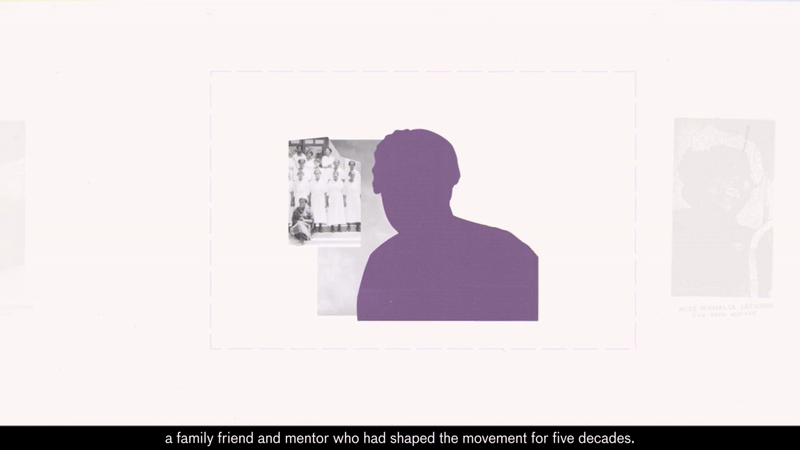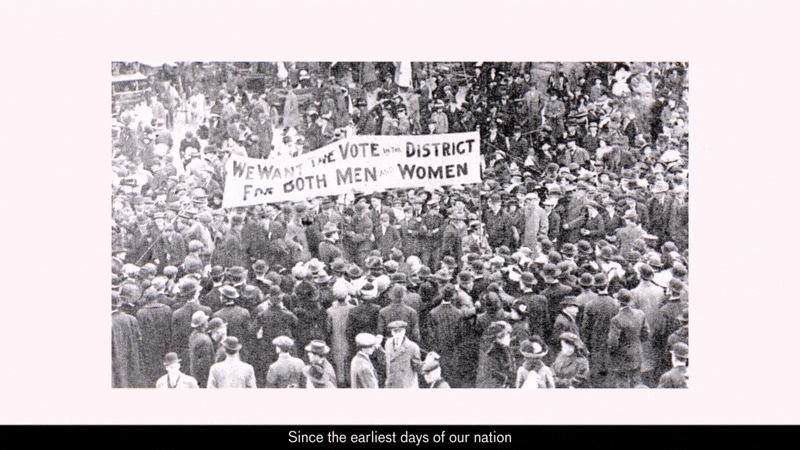
Martin Luther King Jr. Memorial Library
Concept Development • Motion Graphics Style Frames & Art Direction • Touch-screen Interactive Design
Designed at Bluecadet
Motion Graphics by Siji Chen & Devon Burgoyne
Design & Art Direction by Alyssa Hamilton
Content Development by Liz Russell & Lilly Preston
Touchscreen App Development by Erin Wiegman
Project documentation by Dan King
Partner Agencies:
Colloqate
Kubik Maltbie
Openbox
Studio Joseph
Workhorse
The recently renovated MLK Library in Washington, D.C. features a brand new permanent exhibit space that explores past and present activism in the District.
Key topics include Martin Luther King’s connection to D.C., the District’s role in pivotal political moments, and community voices within D.C. today. We developed media concepts that range from motion graphic films, to video community portraits, to an interactive map that highlights historical moments alongside contemporary community stories.
Animated Films
The west gallery focuses on MLK's ties to D.C. and the mutual impact the residents and King had on one another. These relationships are in the forefront of a series of animated films, titled D.C. & King, which are projected onto a large curved screen in the center of the gallery.


Film Attract
The film's Attract highlights the many issues D.C.'s residents and King fought for side-by-side. Collages using print ephemera and photographs from the library's collections illustrate the actions taken in the fight for equality.

Nannie Helen Burroughs Film
The first film focuses on Nannie Helen Burroughs, an educator, orator, and women's rights advocate, who mentored and supported a young King as he rose to prominence.



Home Rule Film
The second film is about Home Rule and the District's fight for self-governance. The story spans the early days of D.C's voting rights to the Civil Rights Movement and the March on Washington, to lobbying for statehood today.
Map Your D.C. Story Interactive
Located in the center of the exhibit, a touch-screen interactive highlights historically significant locations in D.C. and invites library visitors to add their own D.C. story to the map, reinforcing the idea that history happens in your own back yard, and that your story is an important part of D.C.'s cultural fabric. Users can pan around the map and explore ephemera, like photographs and historical maps.




District Catalog
Visitors can share their story of D.C. by filling out cards and filing them in a card catalog. They are prompted to connect with neighbors, share their feedback on the exhibit and ask questions to be answered by other visitors and librarians.